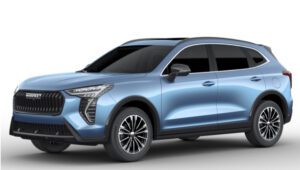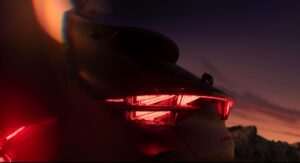Nissan is a brand that will constantly come up when the topic is EVs – or is it just me? The influence of the Leaf here cannot be understated, so of course it is expected that the industry would pay attention when Nissan unveiled their next EV project, the Ariya. Just recently I had it for a few days and it was full of surprises, so join me while we go over a few of them.
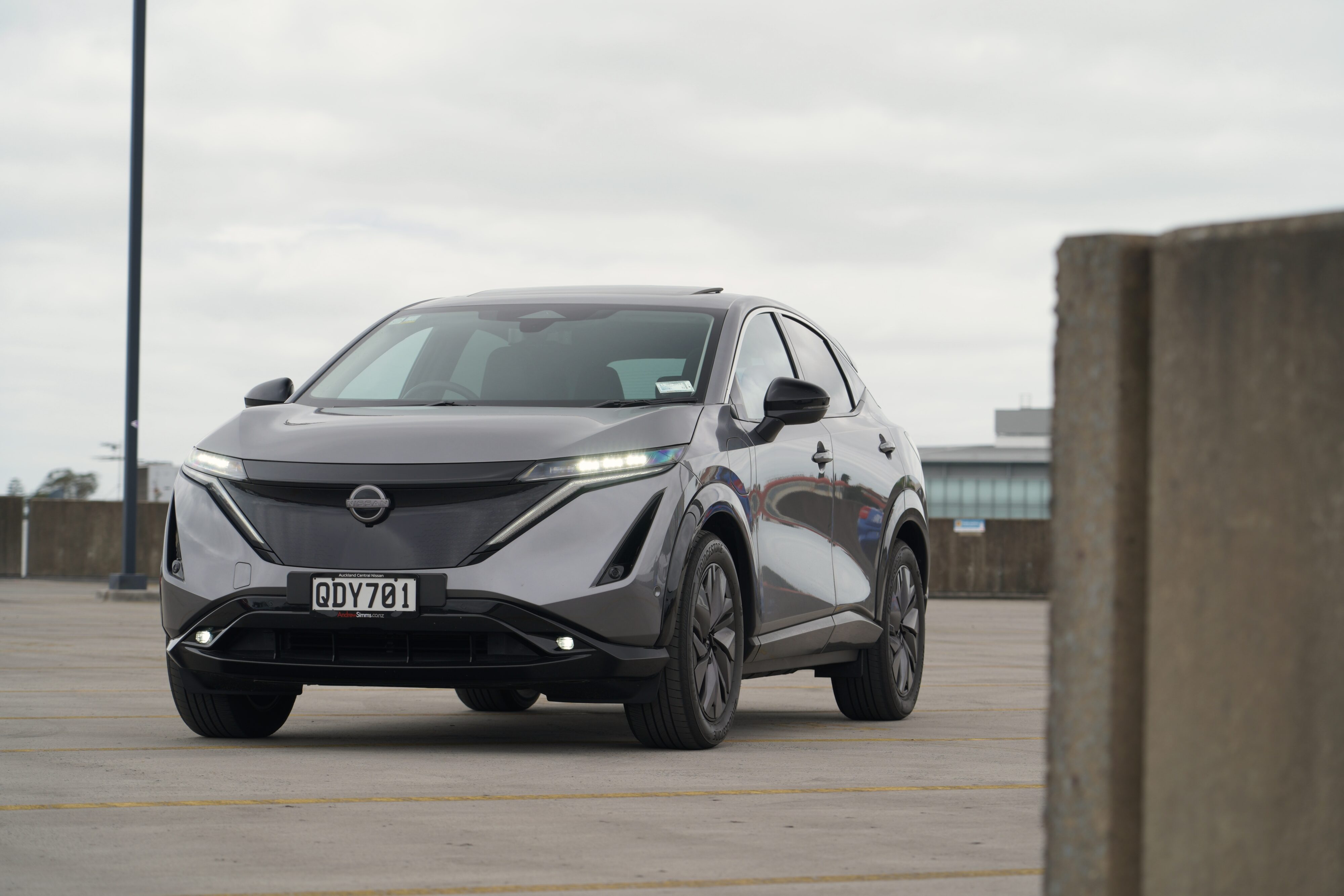
Dave drove me to Nissan for the pick up, and on the way there we discussed some impressions. Turns out he had already had the chance to drive it in his recent UK trip, but this was our opportunity to interact with it for longer, and in Kiwi land. It didn’t take long for us to spot it on the lot, the Ariya is another one of those cars you can see from a distance in a sea of vehicles.
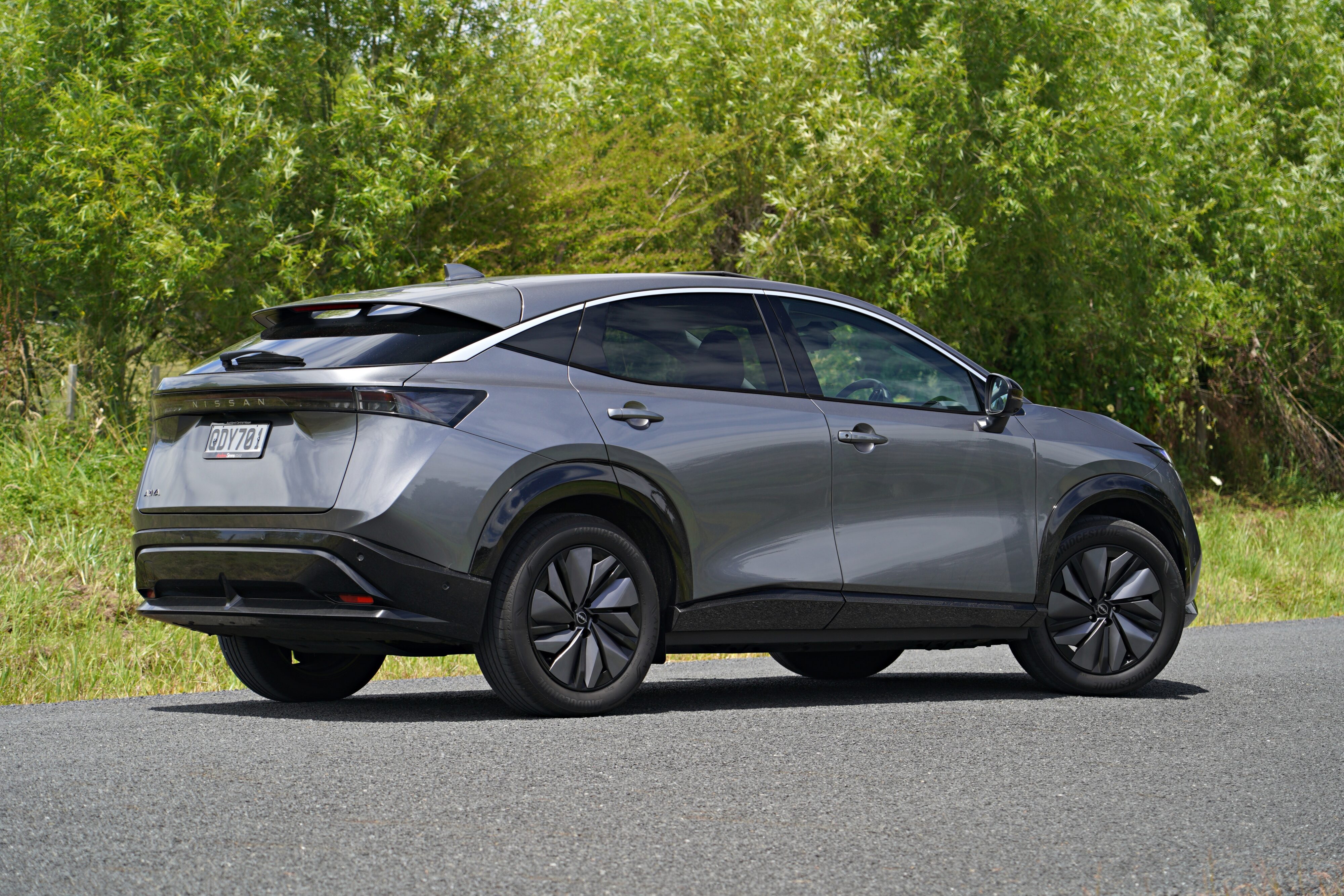
There are a few cars I remember vividly seeing on the road for the first time and thinking they had just left an Auto Show as a concept car. When done right, this risky approach can push the brand’s design language leaps and bounds forward, and sometimes it is a coin toss whether or not they will age gracefully. I think the Ariya is a car that will achieve both, but don’t take my word for it. Some of the people I showed the car to were surprised with its dimensions, thinking that it would have been a smaller car – that’s a testament to how well it masks its dimensions with clever design. That, and the fact that 100% of my sample group liked the way it looked seems like a victory in my books.
It looks awesome, is modern without trying too hard and makes a big platform look fluid and cohesive. It is not too out there either, meaning it has room to evolve and allows Nissan to built upon the look for future models. I did a thing on my Instagram where I masked the car’s badge and said my followers (mostly car people) would never guess what it was. Interestingly, they couldn’t even get the brand right. Guesses included Hyundai, Kia, Lexus, Land Rover, but no one guessed Nissan. My feeling is that it’s a car that needs to be seen in the metal to be properly appreciated, because it screams Nissan, but it was very interesting to see it goes as far as to get people thinking it is from a different brand.

But enough exterior talk, this is all subjective. Open the sill-hugging doors and we’ll get to what is objectively the highlight of the Ariya, its interior. The (somewhat) new EV platform affords it impressive levels of space for both rows, all done to an impressive level of finishing. It really is a great place to be, the use of suede throughout the whole cabin, including dashboard, doors and seats works as an incredible sound deadener, which led to one of the quietest cars I’ve ever driven. It is an isolation pod that uses this silence to its favour when you crank up the Bose sound system. I’ve owned a handful of cars with Bose setups in the past and while in the majority of them it was a bit of a letdown, here the mix of a great range of speakers, a big space to play with and a super low noise floor lead to a system you can tailor to your liking and listen for hours.

The “wood” veneer found on the dashboard fascia and centre console is another great choice that elevates the perception of luxury and specialness of the interior. On the dashboard, it hosts the air conditioning commands through the use of touch sensitive buttons. It is a step between actual knobs and using a screen to change these settings, which I think is an interesting compromise. They’re fast to react, have redundancy on the screen and look pretty fancy when lit up at night (there is more ambient lighting around the cabin to take this further). As for the centre console, there you will find more sensitive buttons to toggle drive modes, e-Pedal operation and open and close a powered central storage cubby. There is still a conventional glove compartment, but more storage is always welcome. And I appreciate the small Sakura easter egg, which might even be a nod to their homonymous newly released kei-sized EV. As for these centre console buttons, I wished the haptic feedback would “click” just a little bit before it actually does in order to feel more natural. It was probably done this way to avoid miss clicks from your arm but it sometimes feels like you have to end up pressing it way harder than you would a normal button.
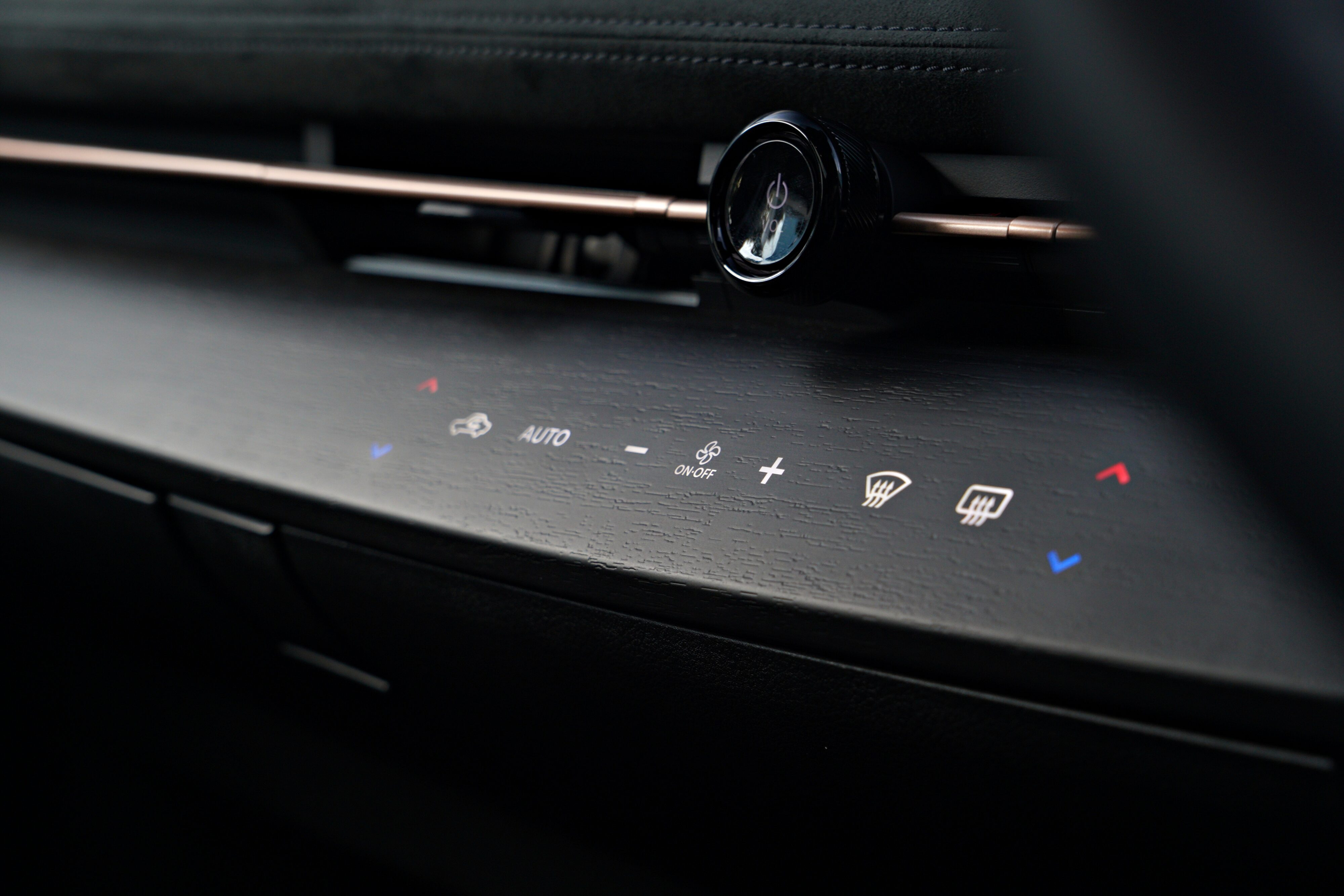
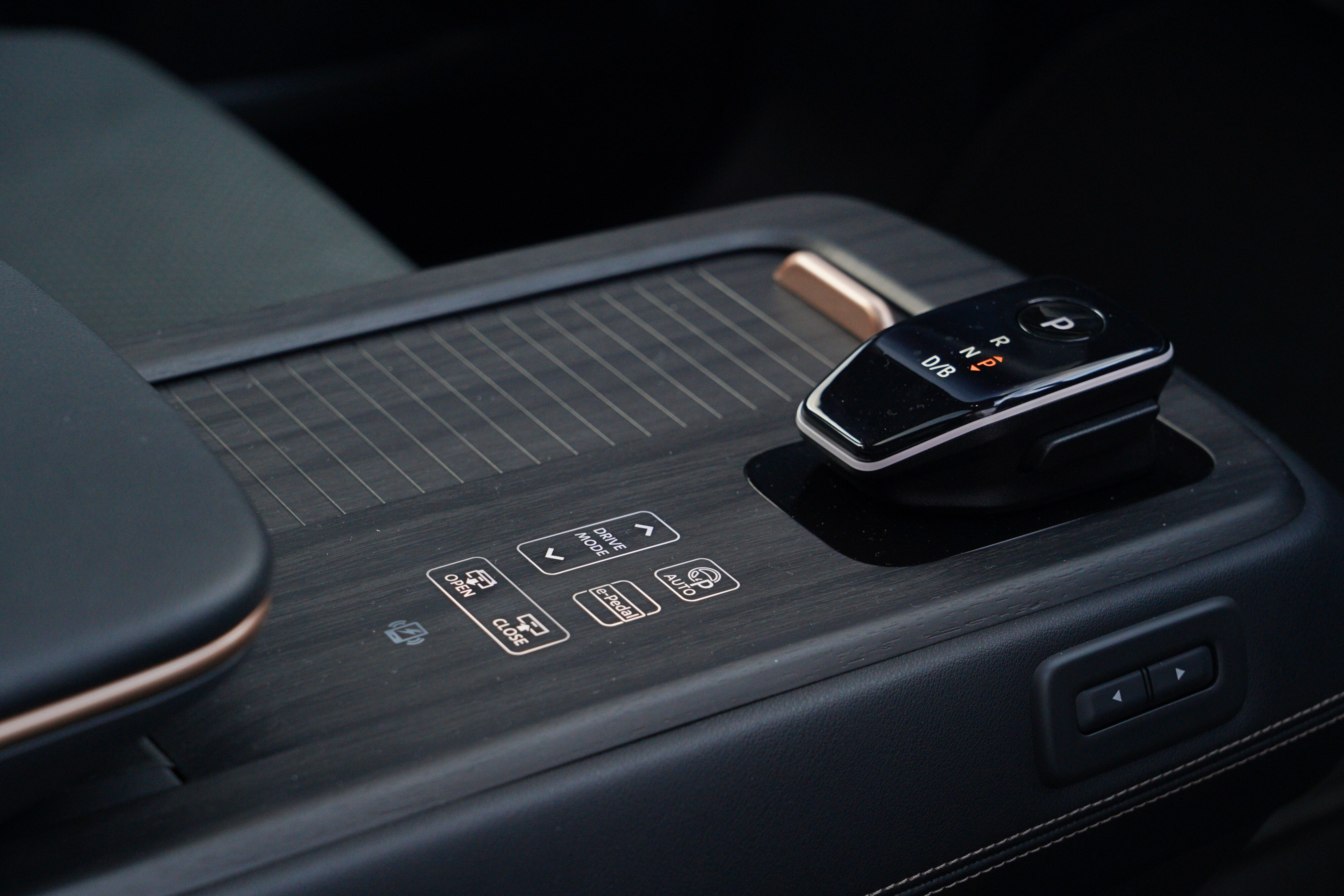
And while on the topic of this centre console, it has another quirk up its sleeve: an electrical switch that moves it forwards and backwards, allowing you to place the armrest at just the right position so that the buttons fall at hand and you can use the elbow cushion while also maximising how much storage you want in between the front passengers’ feet – this was a must for me, considering my driving position with the seat almost all the way back. So yeah, of course, how could I not mention the seats!
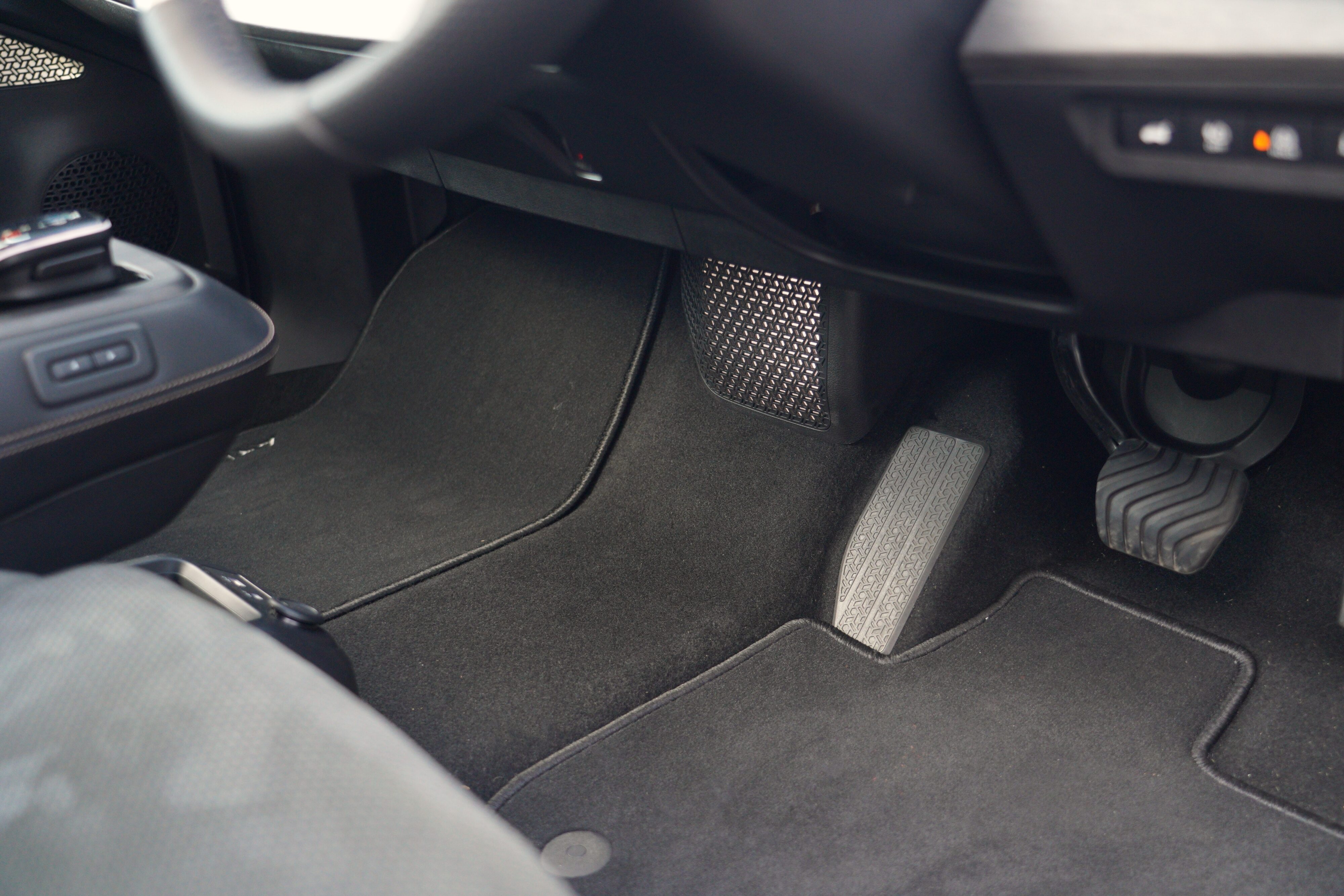
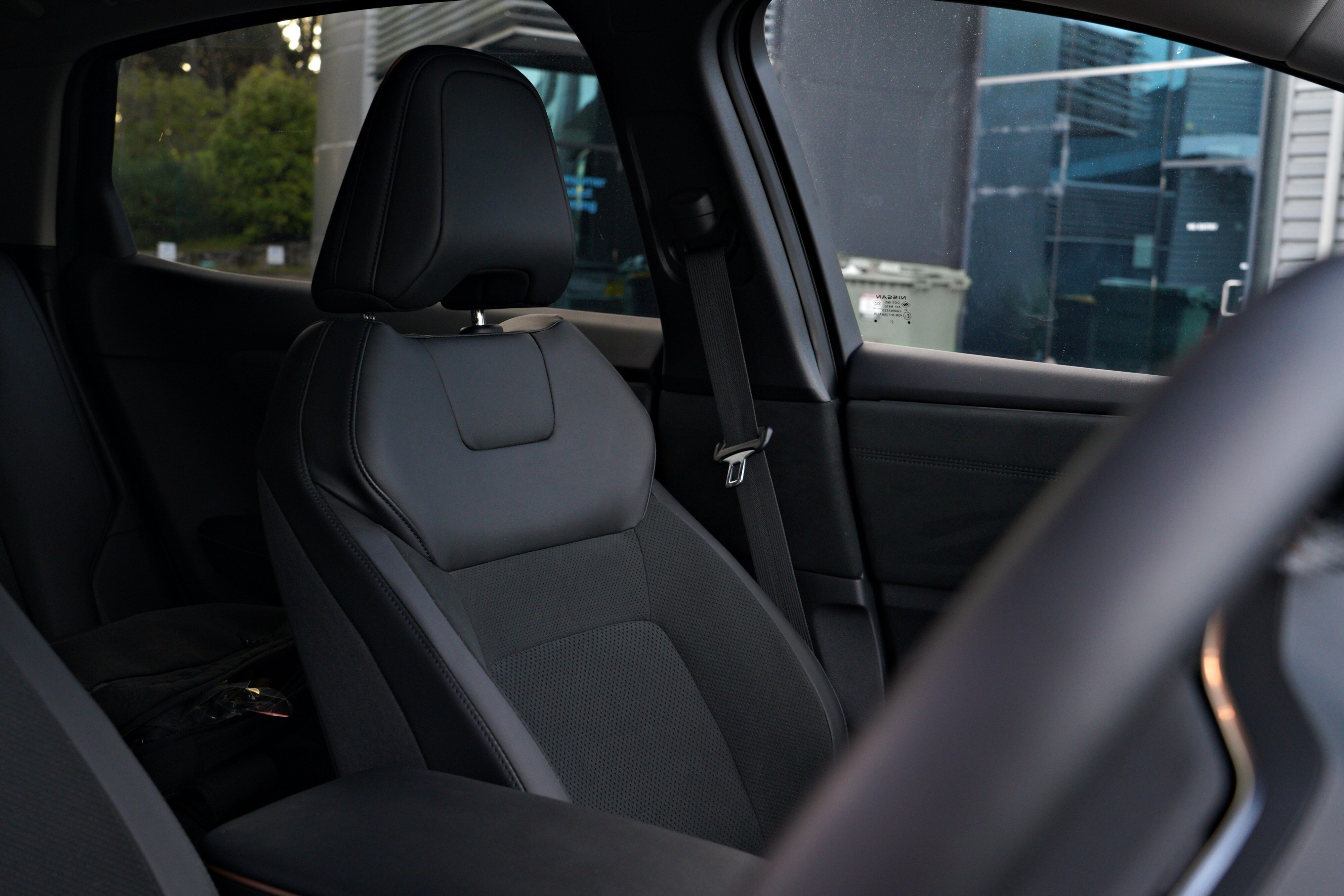
The ones in our car continued the suede upholstery theme, which look and feel the part. The incredible range of adjustment led to some very comfortable driving, more so in the cold than in the warm, due to how loud the seat ventilators are! So much so that to scratch my nerdy itch, I used a decibel meter to compare the noise emitted from the seat ventilators versus the air conditioning when running in the second speed, and the seats were substantially louder while not having the best cooling performance. This is TarmacLife, bringing you anecdotal observations and factual evidence, all in the same review!
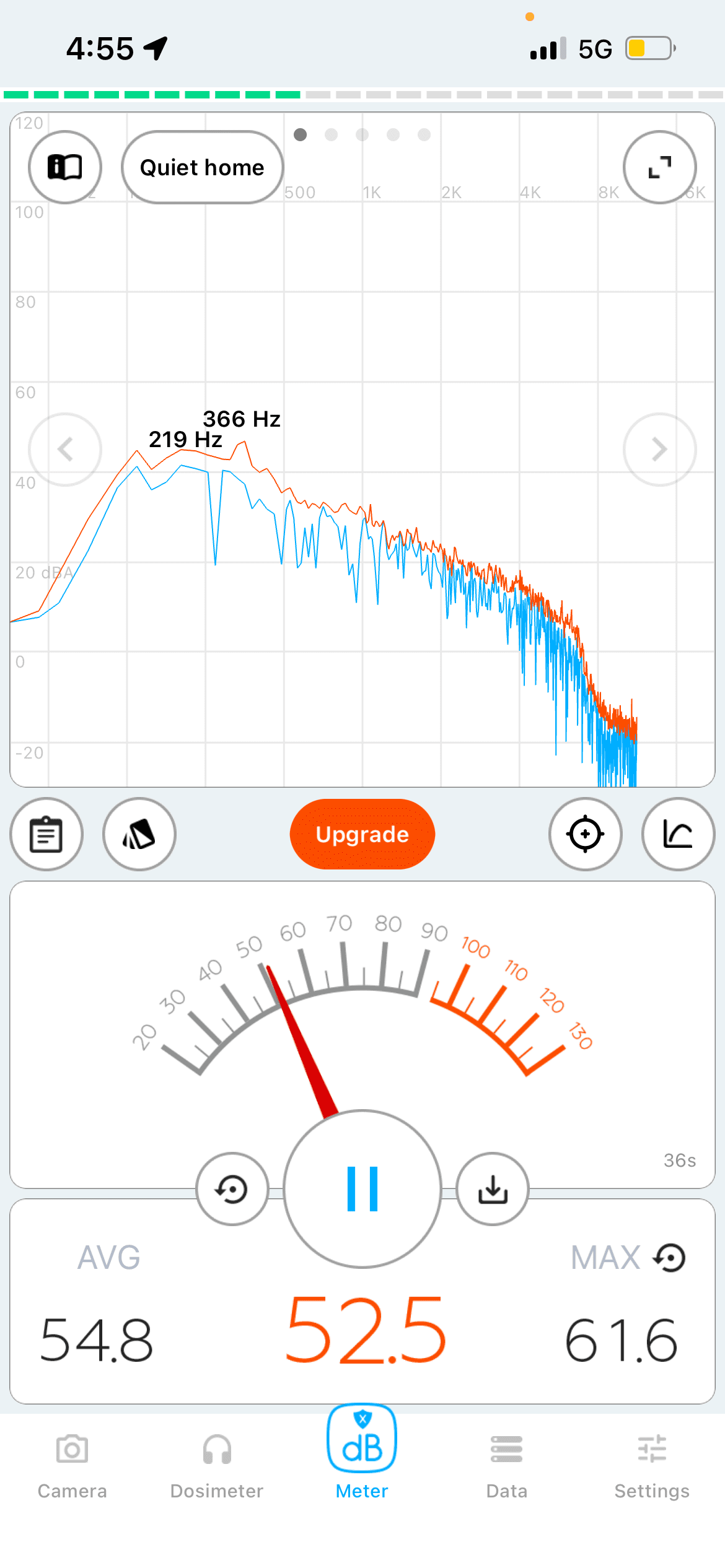

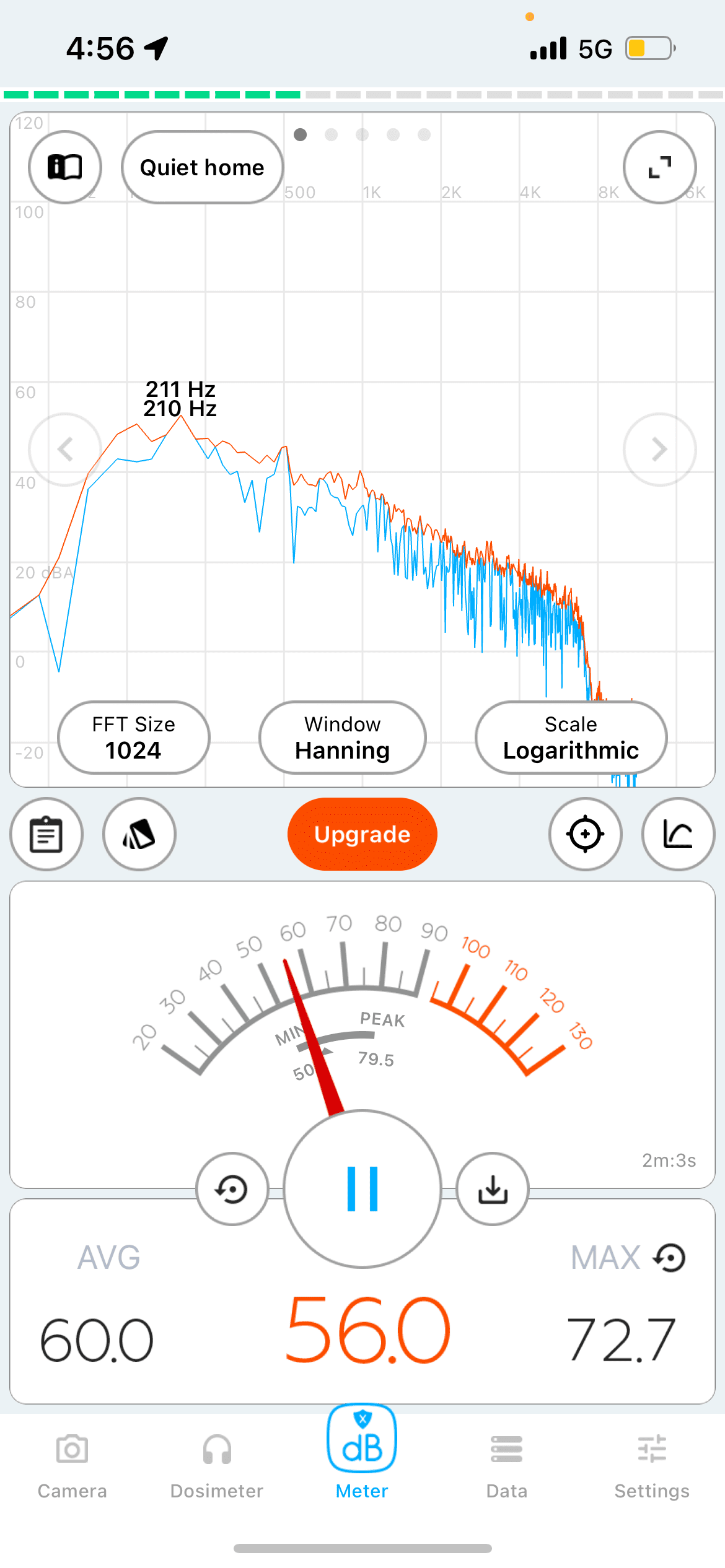
All of these settings are reflected on the central screen, which is not going to win any awards for their performance or definition, but the way they are integrated to the dashboard design should be a lesson to other manufacturers on how to make them look sleek and modern. The software they run feels a bit confusing at times but gets the job done, and the quick and stable wireless phone connection works wonders, thankfully. It is very much a set-and-forget kind of car, so owners should be able to fiddle around with the settings that suit their lifestyle and then stick to driving, which we shall also do right now.
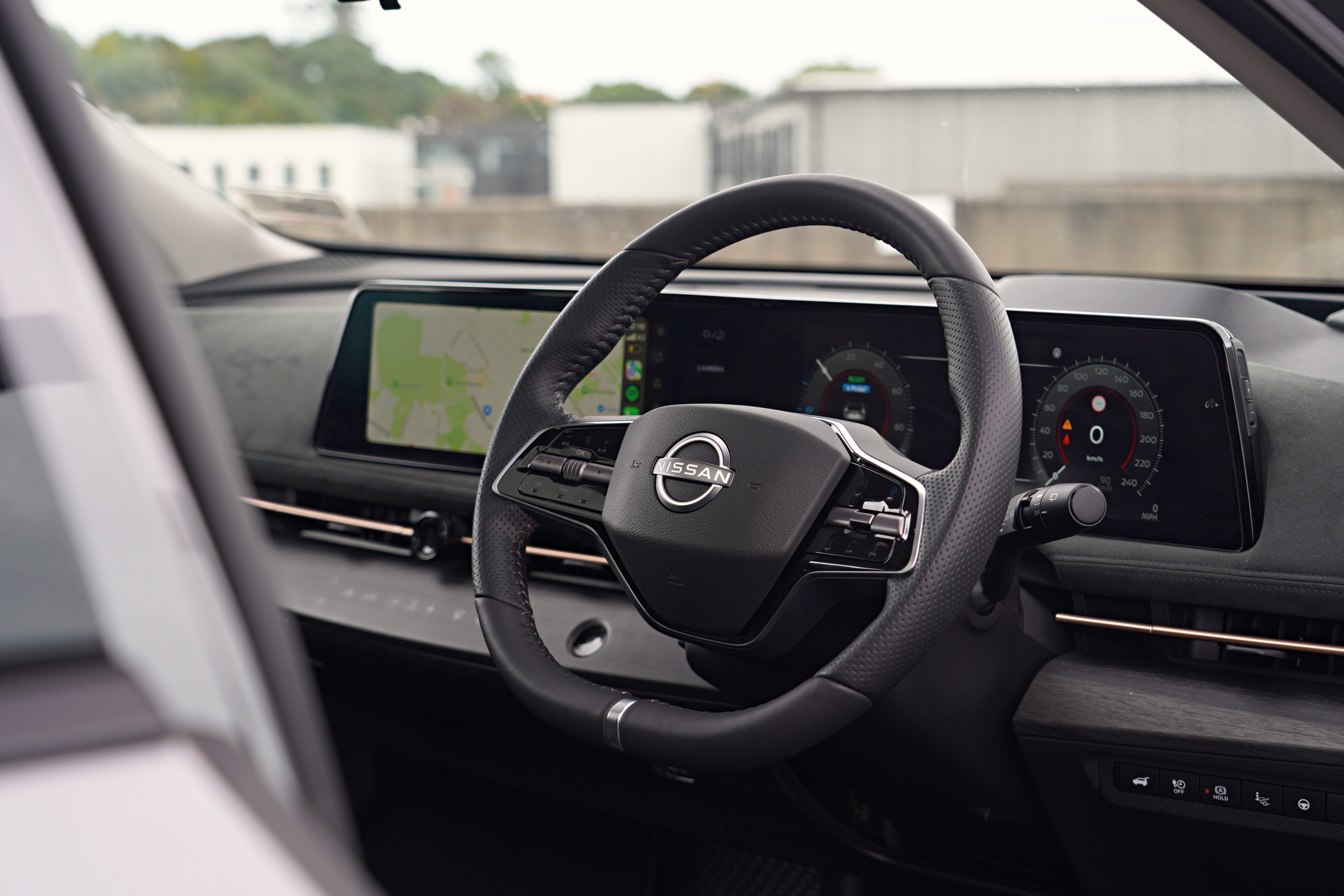
The routine of getting in and start driving the Ariya is a breeze. The systems boot quickly, there is an easy access feature that will adjust seats and the steering wheel back to your individual position and everything happens very smoothly, including allowing you to go into Drive or Reverse. During my time with the car, I picked up that the initial seconds of driving it had a different, more mellow throttle calibration. I am almost sure this is indeed the case, and if it is, it’s a move I can get behind: it gives the driver some time to adapt their right foot to the Ariya’s torque delivery before giving access to the full power. This is barely perceptible, because at the 178kW figure of this specification, the Ariya never feels like a car that wants (or is comfortable) to be pushed hard, and just reassures its chill personality.
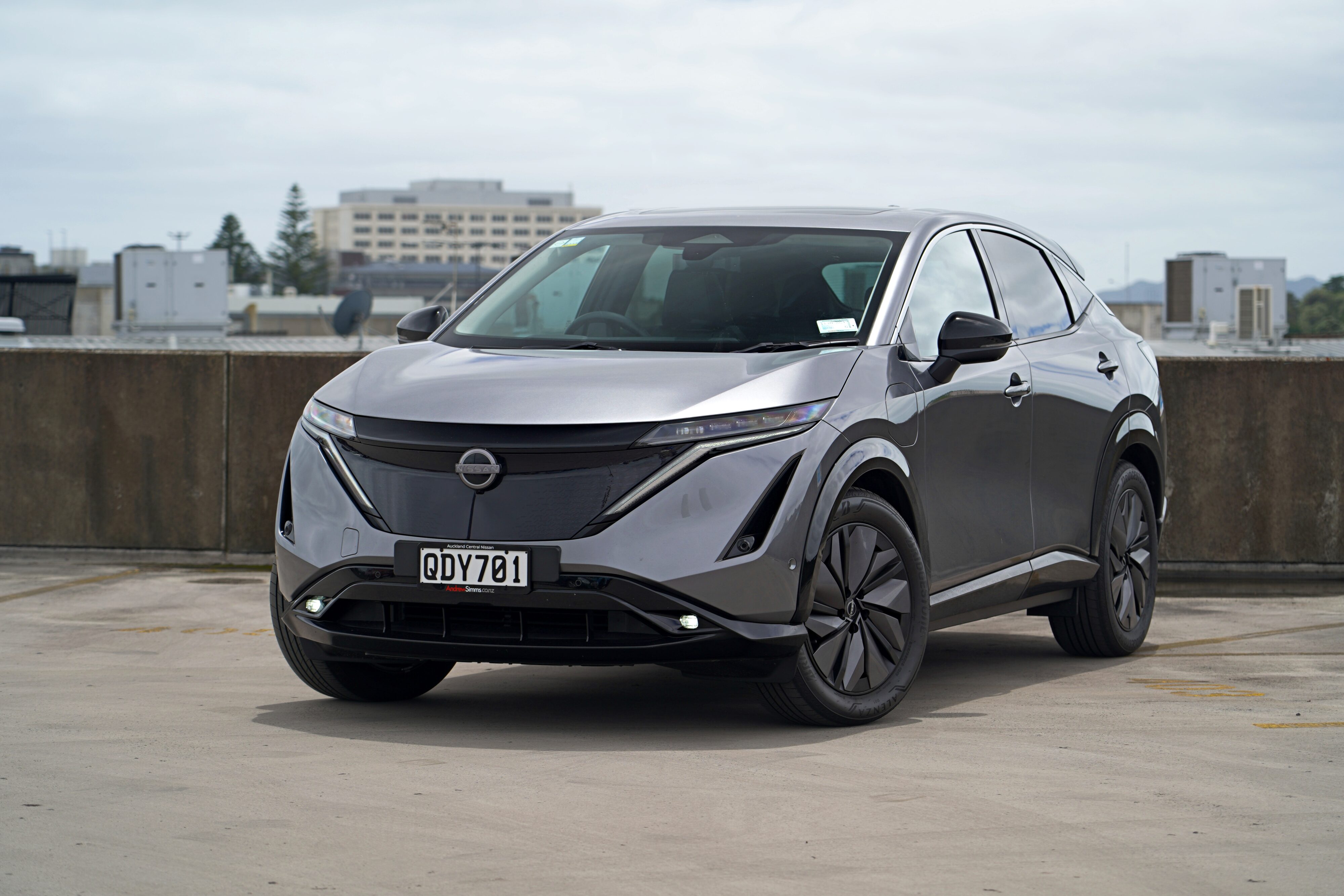
Remember the comical torque steer I mentioned the Leaf had? There is none of that here. The Ariya manages its power much better, and is always smooth in its delivery, regardless of how much you go for it. It almost never gets unsettled, be it on a straight line or in the bends. The suspension calibration is well done, with most of the imperfections never making their way into the cabin. The low frequency bumps, however, can feel harsh some times because in those, it is really hard to mask the added weight of such a big battery pack.
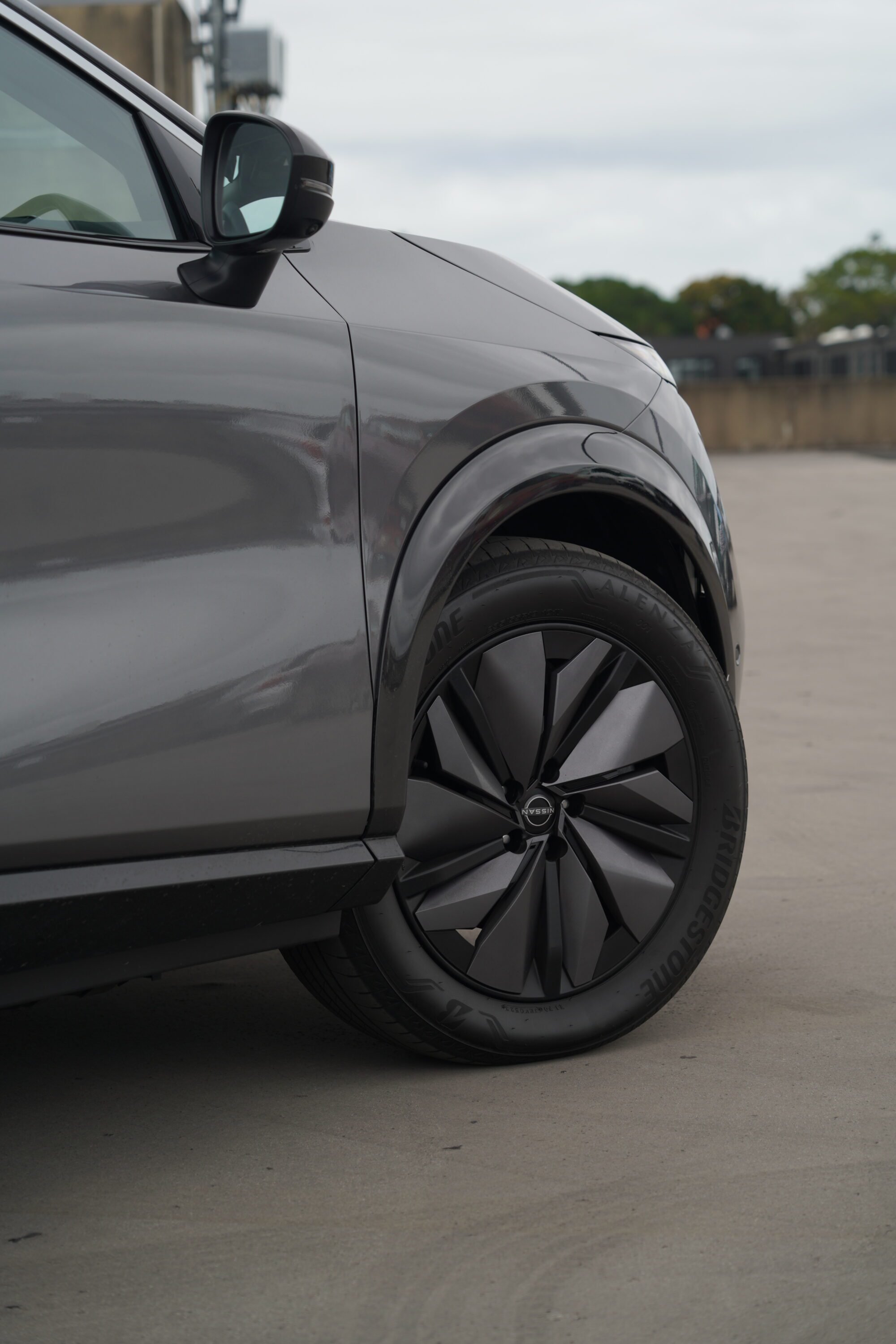
The only ever time I got it to feel a bit less composed was when I forced understeer at the exit of a roundabout. The mix of the software cutting power with the weight transfer made the car boat around from side to side a few times, always in a predictable and safe manner. Again, not something the usual Ariya driver will do on a daily basis, so I’m confident to say it gets its proposition covered. For an isolated and comforatble daily driver, the Ariya pass the test with flying colours, albeit with one small remark.
Our model offered a very complete package of driver assistance packages, which I got to test during my daily commutes (you know I always do). The performance of the adaptive cruise control was somewhat hit-and-miss, to the point I got conscious of cars behind me. A few times I didn’t trust it 100% and went for the brakes, only to find the pedal to be at a different position every time (and having it react differently depending on how much pressure it has already built). I know more and more brands are doing this now, but this was my first experience with it and it’s not good. To add insult to injury, the Ariya will not come to a full stop when e-Pedal is turned on, which not only is counter intuitive but also incongruent with what other cars of the brand already did in the past.

Range prediction seemed to be extremely predictable and accurate, and drew gasps from my friends once they heard about the (achievable) 500+km mark. It needs to be said that this only is possible by lugging around a heavy, expensive and material-intensive 89kWh of usable battery capacity, but nonetheless an impressive figure. The 130kW DC charging numbers can lead to an almost full charge in half and hour, and your home charging can be sorted overnight with a 22kW onboard AC charger.
On my last day with it, I was making my way into my local supermarket when I saw a guy lose it when he realised the car he was seeing. He crossed the road to snap some pictures of it, and when I indicated to enter the supermarket, he crossed the road again and came towards me. I gave him the opportunity to check the car around and we had some good banter, where he knew everything about it and was keen to know more about Nissan’s plans of making it available in NZ.
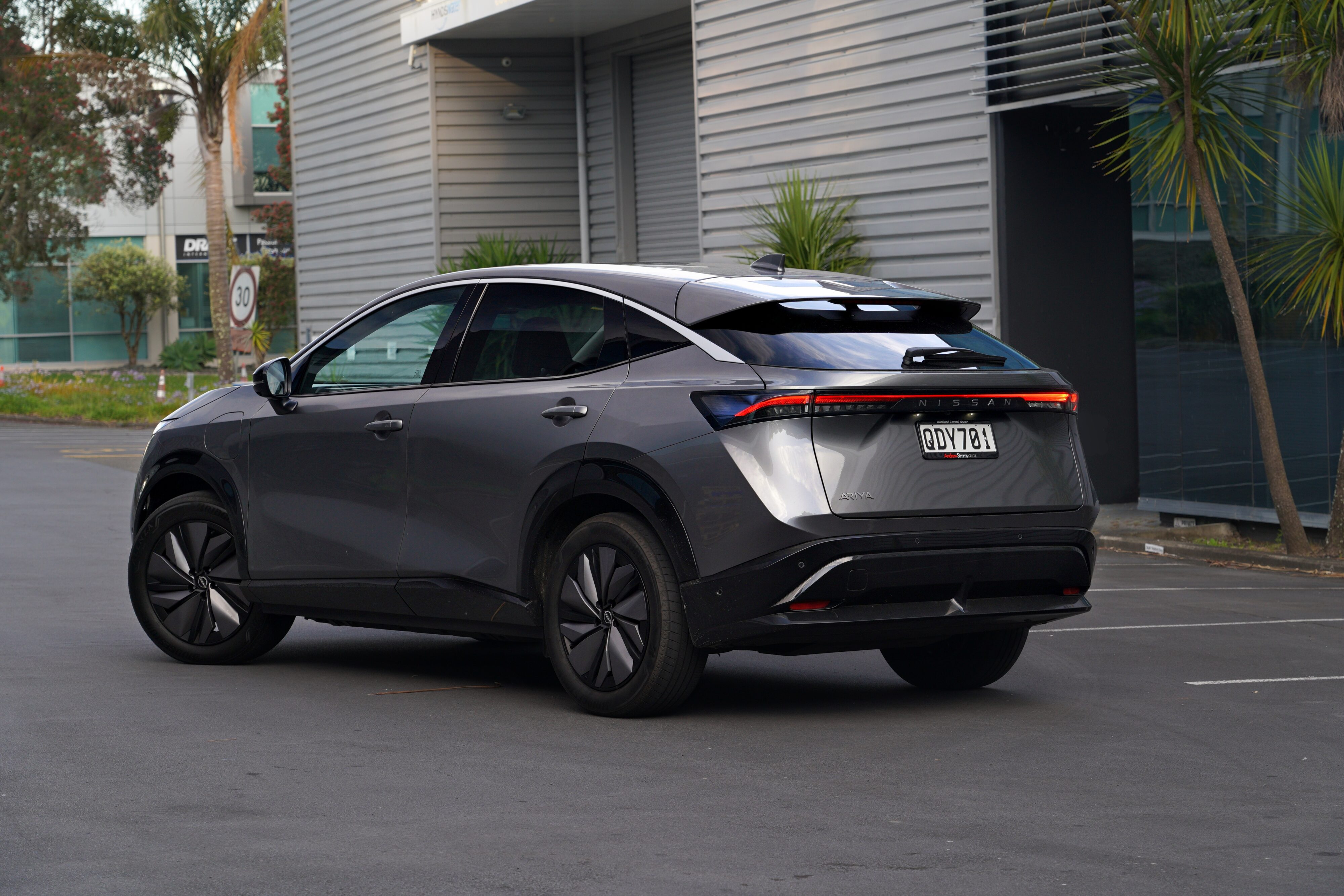
The Ariya represents a big change to Nissan’s electric offerings, and a good one at that. It clearly isn’t a sports car, but neither is it trying to. It’s refreshing to see that not all EVs are chasing neck-breaking torque delivery and 0-100 times, the whole industry is better for it! It is much better when driven as comfortable transportation, and people looking for that will be extremely satisfied with what they find in the Ariya.
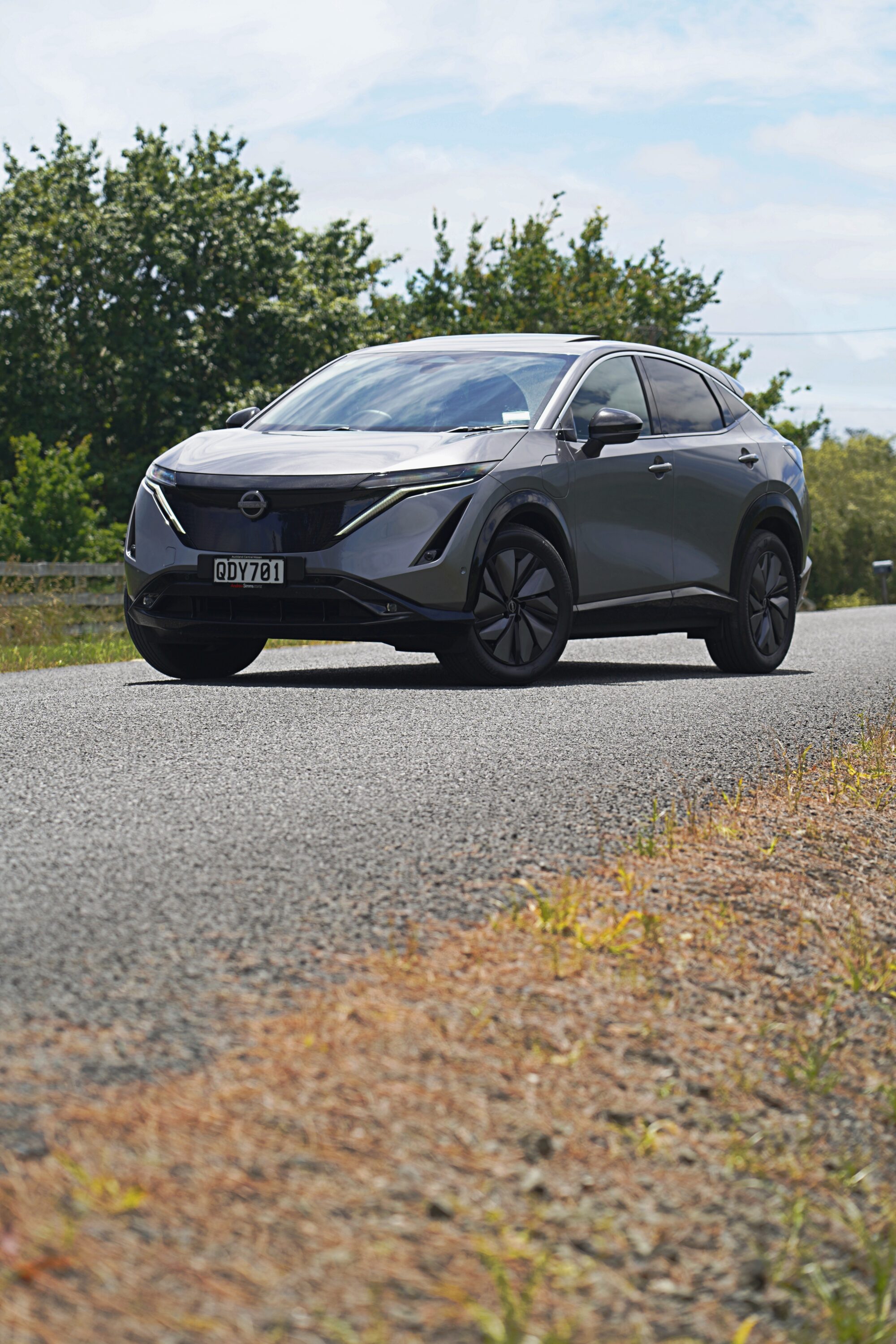
It brings sharp new looks, an impressive interior full of comfort, tech and nice materials and is a very relaxing drive. It might have departed from the initial proposition their other mass-market EV offered years ago, but it’s also a much more mature car. I enjoyed my time with it and am optimistic about seeing all of this trickle down to the other vehicles from the Japanese brand. Stay tuned for when we get to try them, and have a great 2024!

